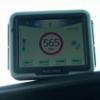-
Posts
57 -
Joined
-
Last visited
About Piltdown Man
- Birthday 12/04/1956
Contact Methods
-
Website URL
http://
-
ICQ
0
Profile Information
-
Gender
Male
-
Location
Wor Yem
-
Interests
Making models
Recent Profile Visitors
1,496 profile views
Piltdown Man's Achievements

New Member (2/9)
2
Reputation
-

Any advice on using real soil in dioramas please.
Piltdown Man replied to Gorby's topic in Diorama Chat
The good thing about soil is it’s very, very cheap. The bad thing is it might not look like soil when you use it. Advice above about not “over sieving” is good, but that all depends on what sort of surface you are looking for and what scale you are working in. Also remember you can add pigments to change its colour. Regarding application I use it in one of two ways: wet or dry. The dry method involves preparing the surface and then undercoating. The soil will give the final colour and texture. Once the surface has been prepared, apply a thin layer of PVA or scenery scatter glue and place the soil where required. You can also apply the soil dry and glue it down by spraying with a very well diluted water/PVA mix (with a drip of detergent to break its surface tension). Once dry, vacuum it up and re-use. Recoat as required. The wet method is also very simple, just mix the soil with PVA and cheap acrylic paint and paint it on. Again, once dry remove any loose pieces but these are likely to be very clumpy and not reusable. Again, recoat as required, wet or dry. The finished surface can then be grassed, dry brushed, weathered or washed etc. -
Jure - I'm not so sure about your comment regarding ammunition in the fuselage being closer to the C of G enhancing maneuverability. Wing mounted ammunition is also normally very close to the aircraft's lateral C of G. It may reduce an initial rate of roll but storing ammunition in the wing increases the structural integrity of the airframe because it reduces bending loads on the wing. That allows the airframe to sustain a greater g loading. PM
-
If only grass was grass. But even if it was, grass is not grass. A close inspection will show that it is comprised of several colours and if not recently mown, comprised of fronds/leaves with various lengths. 1:72/76 grass might best be depicted with ground sponge whereas 1:43/48 and above represented with flock fibres. Therefore the best advice is to buy lots of little bags of different colours and lengths and to use the real world for inspiration. PM
-
I'm sorry to be a late arrival, but the differences between the 195 and 170 are enormous. The bits that are the same are fuselage cross section, nose and rear fuselage. The rest is different. Not by much but enough. The biggest obvious changes are the gear (totally different), engines and pylons. The rest is similar. The difference between a 170 and 175 is fuselage length (and a few internals). PM
-
The aircraft is a Dornier Do-28-G92 Skyservant. It was flown by a guy called Joe Horta who is apparently known for this sort of thing. As for risk that is another issue. The greatest hazard would probably be a bird strike and associated distraction. Music: Sail - Awolnation. PM
-
Beautiful modelling, crap workplace. No beer storage! PM PS. I REALLY like the underneath of the beast. Oily. Gunky. Very neglected. Excellent.
-

A Question for the Experts in Helicopter Design
Piltdown Man replied to Richard E's topic in Real Aviation
I helicopter has to near enough be in balance when lifted by its rotor head. Bear in mind that what you can't see in the real thing is the location of the engines, batteries, avionics etc. which the designer uses to keep the CofG within tolerance. And yes, a bigger helicopter means more power, bigger gearbox and bigger and/or more rotor blades to absorb the increased power. Increasing the length of a blade is often quite difficult because of tip speeds (both of advancing and retreating blades). PM -
I'll try. But, firstly we'll have to state the obvious. The reason we travel is to get from one place to another. So, starting from where you live or where you work, where is the nearest airport? For most, the nearest airport is NOT Heathrow! Our country has 20 or so regional airports (due to the last war). Then have a look at the travel possibilites from that airport. If you are lucky you'll have a direct service to your destination, if not, you may have to consider a flight via Schiphol, Paris or even Heathrow. Then you look at the price and then the schedule. And that has to be balanced against possible surface travel, parking and hotel costs (money and time) to fly from Heathrow. Remember, unless you stay within one terminal, this place is a pain. Then you have to consider how firm your plans have to be. A cheap ticket probably means no changes or refunds where as a full fare Business Class ticket means you don't have to show up, even if you have checked in. When you add that lot up, you'll see where Schiphol fits in. You can fly there from most UK airports, choosing from multiple flights, and an hour or so after landing, be on your way to your final destination. And while we are at it, what do reckon the average taxi time is at Heathrow? I reckon it's about 25 minutes. Assuming normal operations at Schiphol it's nine minutes and even to the Polderbaan it's 13 mnutes. Also holding is rarely required at Schiphol but 20 minutes should always be expected at London. Does the above make sense? PM
-

The mystery of Llanbedr's Midnight Hercules...
Piltdown Man replied to F111Fan's topic in Real Aviation
Some time ago I used to live very close to RAF Watton. It was a sort of closed (but open) RAF base, still owned and run by the MOD. However, for a "closed" airfield it had rather a lot of movements, especially at night. The noise of multiple Garrets at ground idle is rather distinctive, so there was no doubt as to what aircraft was operating. But what was really strange was that when one of the aircraft took off, you couldn't see it. Even at night you'd normally see something. The mystery was explained to me by a colleague who previously flew them - these were night time excercises flown with lights off and night vision goggles. The more places you visit, the more you experience - but what you don't want are too many surprises - like holes in the ground, dumped cars, people etc. This is why they choose MOD owned and operated sites. As for what they drop off and pick up, it varied - sometimes nothing. PM -

Fokker 27 / Fokker 50 differences.
Piltdown Man replied to Radleigh's topic in Modern - 1969 and onwards
Ermmm.. There are also two nose wheels on the 50, different nose-wheel doors, the passenger door is at the front, the wingtips are different, aileron are a different. Changes were made to the outflow valve outlet, the propellers are totally different, de-icing boots are changed - shall I go on? If you want, I have some pictures of a 50. PM -
It's actually silvered to the front. Rear nav. lights (white) are designed to be visible 70˚ either side of the longitudinal axis. However, I do like the idea of it being a reversing light. PM
-

need help on a380 headset conection point
Piltdown Man replied to pperkins's topic in Modern - 1969 and onwards
I don't think the Airbus 380 has a bypass pin. That is a Boeing device. And Dave's excellent links are very interesting reading. I thing you'll also find there are actually 20 intercom points and four external power receptacles. For a start-up diorama, don't forget the wheel chocks if you are not using a tug. PM -
I remember my last flight in a T31 at Dunstable locally named the "Blue Brick". It must have been around 1992/3 during a "Vintage" weekend. I was offered the glider and asked to give someone a ride. I timed a winch launch so I could immediately fall into a thermal. And up we went. A few minutes later we went on a two hour tour of Bedfordshire & Buckinghamshire. I can remember thermalling inside others (as this can turn at about 35 kts), how poor the visibility was from the back seat and how dreadful the glide was. But we had fun. The passenger took lots of pictures and it was damn cold! But back to the OP. What a lovely model and setting. Excellent work. PM
-
Knock-out! PM
-

A Builder's Truck - In 1/32!
Piltdown Man replied to Spence's topic in Ready For Inspection - Vehicles
This is a truly stunning piece of work. I find it hard to believe this is 1:32. It is clearly evident that Spence observes real life and then incorporates it into his models (eg. the window marks showing where the window has been wound up and down). Brilliant! PM




